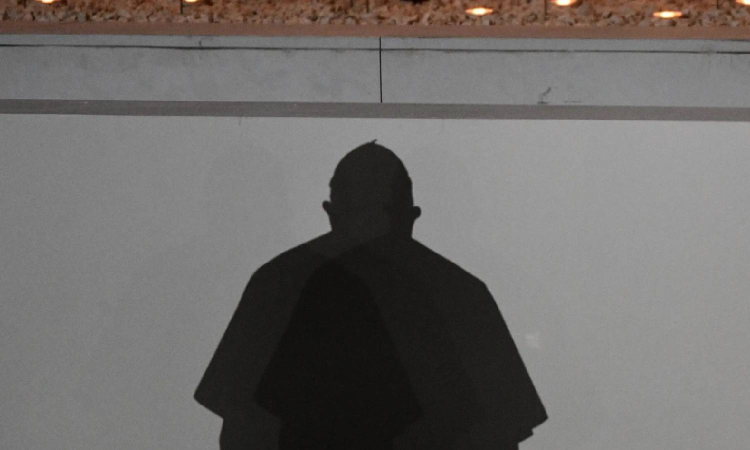Signs and sighs: What happened to Francis Revolution?
In his final years as Cardinal Jorge Mario Bergoglio of Argentina and in his first years as bishop of Rome, Francis spoke passionately of the need to overhaul and modernize the church

Pope Francis
How will history judge Pope Francis’ legacy? It seems reasonable to predict that for many progressive Catholics and others who hoped he would prove to be a revolutionary, his papacy will be remembered as a disappointment.
Although Francis dramatically changed the tone of Vatican debates, with an emphasis always on promoting mercy and humility over punishing sin, especially when it came to gay and divorced Catholics, the Francis revolution that his admirers once proclaimed never took place. He proved to be far more cautious and conservative than many of them had hoped for.
In his final years as Cardinal Jorge Mario Bergoglio of Argentina and in his first years as bishop of Rome, Francis spoke passionately of the need to overhaul and modernize the church. He was open to the idea of allowing priests to marry and committed to ending the second-class status of women by promoting them to senior posts in the church hierarchy. As pope, he vowed repeatedly to end the crisis of priestly sexual abuse that has convulsed the Vatican for decades.
But he mostly fell short on these issues. And because he did not fundamentally rewrite church teachings, his most controversial and important initiatives — including his 2023 decision allowing priests to bless same-sex couples and his 2016 document opening the door for divorced and remarried Catholics to receive holy communion — could be reversed by a successor with little more than a wave of his hand.
Many reform-minded Catholics were angered last year when Francis, at the end of a worldwide bishops’ meeting billed as the most important gathering of church leaders in decades, failed to act on its most groundbreaking recommendation: to allow women to take low-level posts in the ministry as deacons.
Francis, like all his modern predecessors, consistently ruled out the ordination of women priests, arguing it would be too violent a break with tradition, since women have always been barred from the priesthood. But many at the meeting thought Francis would embrace the appointment of women as deacons, who have limited authority to lead worship services, since there appeared to be historical precedent for it. But in the end, Francis put off a decision, stating through a spokesman that while the church remained committed to expanding the authority of Catholic women, “the issue of the female diaconate is not mature.”
That fit a pattern that Francis followed throughout his papacy of offering pronouncements that kept progressive Catholics optimistic about broad reforms, but failing to change doctrine in a way that guaranteed his reform-minded agenda would survive his papacy.
In 1962, Pope John XXIII, the reform-minded architect of the Second Vatican Council, created a commission that four years later voted overwhelmingly to allow birth control. But John’s successor, Paul VI, rejected the panel’s report in a 1968 decree that appalled millions of Catholics, as well as much of the church leadership. More than half a century later, Francis, like all of Paul’s successors, kept the ban in place, though it is widely ignored.
Similarly, Francis refused to make even small revisions in the 11th-century doctrine of priestly celibacy, which many theologians have long questioned since there is no direct justification for it in the Gospels. Jesus made no demand for celibacy from his apostles. South American churchmen were heartbroken when Francis rejected a measure, approved by a two-thirds vote at a 2019 synod, to allow the ordination of married men in the vast Amazon River basin, where the priest shortage has been dire for centuries.
But his gravest failure as pope was his unwillingness to seriously grapple with the crisis of priestly child sex abuse, often described as the most devastating scandal to confront the Vatican in centuries.
His reform efforts have been, at best, halfhearted and inconsistent. Online databases maintained by victims-rights groups show that hundreds of Catholic priests and church workers continue to be accused of child molestation and other sex crimes each year. In several well-documented cases, he was accused of delaying or scuttling sex-abuse investigations of churchmen known to be his friends.
Reform-minded Catholics disappointed by Francis may have reason to hope about what will follow his papacy. Francis remade the Vatican into a more tolerant and democratic institution, and it seems possible that the Francis revolution has just been delayed until after he was gone.
His allies believe he laid the groundwork for that with his influence over the makeup of the College of Cardinals, the body that will choose his successor. He has appointed 80 per cent of the 135 cardinals who will be locked inside the Sistine Chapel in the coming weeks to elect one of them as the next pope. Most of his appointees are younger and more racially and geographically diverse than the men they replaced, and many appear to be far more progressive than Francis was.
Over the centuries, the outcome of conclaves has been impossible to predict. But if the cardinals named by Francis vote together and show loyalty to the pope who honoured them with those flowing red robes, they will choose a successor who will pursue Francis’ agenda for change — and who may feel empowered to do much more to achieve it.
©️The New York Times Company



